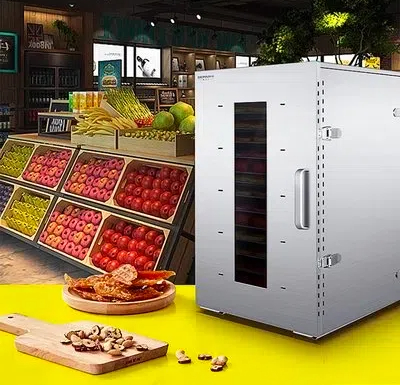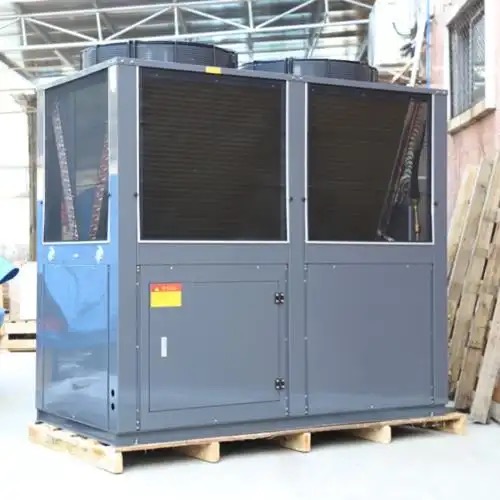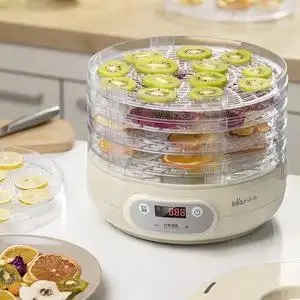
Content Menu
● Understanding Heat Pump Dryers
>> How Heat Pump Dryers Work
● Advantages of Heat Pump Dryers for Food Processing
>> 1. Energy Efficiency
>> 2. Preservation of Nutritional Value
>> 3. Versatility
>> 4. Reduced Environmental Impact
>> 5. Consistent Drying Quality
● Considerations When Investing in Heat Pump Dryers
>> 1. Initial Cost
>> 2. Space Requirements
>> 3. Maintenance Needs
>> 4. Training for Operators
>> 5. Technological Advancements
● Case Studies: Success Stories with Heat Pump Dryers
>> Case Study 1: Fruit Processing Company
>> Case Study 2: Herb Drying Business
>> Case Study 3: Meat Processing Facility
● Conclusion
● Frequently Asked Questions
>> 1. What types of food can be dried using heat pump dryers?
>> 2. How much energy can I save by using a heat pump dryer?
>> 3. What is the typical drying time for food in a heat pump dryer?
>> 4. Do heat pump dryers require special installation?
>> 5. How often should I maintain my heat pump dryer?
In recent years, the demand for efficient and sustainable food drying solutions has surged, particularly in the food processing industry. As a leading manufacturer of food drying machines in China, we specialize in providing OEM services to international brands, wholesalers, and producers. This article explores the benefits of heat pump dryers, particularly in the context of food drying, and discusses whether they are worth the investment for your business.

Understanding Heat Pump Dryers
Heat pump dryers are innovative machines that utilize a heat pump system to dry food products. Unlike traditional dryers that rely on direct heat sources, heat pump dryers operate by transferring heat from the environment to the drying chamber. This process is not only energy-efficient but also helps preserve the quality and nutritional value of the food being dried.
How Heat Pump Dryers Work
The operation of a heat pump dryer involves several key components:
1. Evaporator: This component absorbs heat from the surrounding air, causing the refrigerant inside to evaporate and turn into gas.
2. Compressor: The gas is then compressed, raising its temperature and pressure.
3. Condenser: The hot gas is passed through the condenser, where it releases heat to the drying chamber, effectively drying the food.
4. Expansion Valve: After releasing heat, the refrigerant returns to a liquid state and passes through the expansion valve, where it cools down and the cycle begins again.
Advantages of Heat Pump Dryers for Food Processing
1. Energy Efficiency
One of the most significant advantages of heat pump dryers is their energy efficiency. They can operate at lower temperatures compared to traditional drying methods, which reduces energy consumption. This is particularly beneficial for food processors looking to minimize operational costs while maintaining product quality. By utilizing ambient air and recycling heat, these dryers can achieve energy savings of up to 50% compared to conventional drying methods.
2. Preservation of Nutritional Value
Heat pump dryers are designed to operate at controlled temperatures, which helps preserve the nutritional value of the food. High temperatures can degrade vitamins and minerals, but with heat pump technology, food retains more of its essential nutrients. This is especially important for health-conscious consumers who are increasingly seeking products that maintain their natural benefits.
3. Versatility
Heat pump dryers can be used for a wide range of food products, including fruits, vegetables, herbs, and meats. This versatility makes them an excellent investment for businesses that process various types of food. For instance, a single heat pump dryer can be used to dry apples, tomatoes, and even fish, making it a multifunctional tool in the food processing industry.
4. Reduced Environmental Impact
By using less energy and producing less waste heat, heat pump dryers contribute to a lower carbon footprint. This aligns with the growing trend towards sustainability in the food industry, making them an attractive option for environmentally conscious businesses. Many companies are now prioritizing eco-friendly practices, and investing in heat pump technology can significantly enhance a brand's reputation.
5. Consistent Drying Quality
Heat pump dryers provide uniform drying conditions, which results in consistent product quality. This is crucial for food processors who need to meet specific quality standards and customer expectations. Inconsistent drying can lead to variations in taste, texture, and shelf life, which can negatively impact customer satisfaction.

Considerations When Investing in Heat Pump Dryers
While heat pump dryers offer numerous benefits, there are several factors to consider before making an investment:
1. Initial Cost
Heat pump dryers typically have a higher initial cost compared to traditional dryers. However, the long-term savings on energy bills and the potential for higher product quality can offset this initial investment. Businesses should conduct a cost-benefit analysis to determine the return on investment over time.
2. Space Requirements
Heat pump dryers may require more space than conventional dryers due to their design and the need for proper ventilation. Businesses should assess their available space before purchasing. It is essential to ensure that the installation area allows for adequate airflow and maintenance access.
3. Maintenance Needs
Like any machinery, heat pump dryers require regular maintenance to ensure optimal performance. Businesses should be prepared to invest time and resources into maintaining their equipment. Regular cleaning of filters and checking refrigerant levels are crucial for maintaining efficiency.
4. Training for Operators
Employees may need training to operate heat pump dryers effectively. This is an important consideration for businesses that are new to this technology. Providing comprehensive training can help maximize the benefits of the equipment and ensure safe operation.
5. Technological Advancements
As technology continues to evolve, newer models of heat pump dryers may offer enhanced features such as improved energy efficiency, automated controls, and better monitoring systems. Businesses should stay informed about the latest advancements to ensure they are making the best investment.
Case Studies: Success Stories with Heat Pump Dryers
Case Study 1: Fruit Processing Company
A fruit processing company in Europe decided to invest in heat pump dryers to improve their drying process. Previously, they used traditional hot air dryers, which resulted in high energy costs and inconsistent product quality. After switching to heat pump technology, they reported a 40% reduction in energy consumption and a significant improvement in the flavor and color of their dried fruits. The company was able to expand its product line and increase sales due to the higher quality of their offerings.
Case Study 2: Herb Drying Business
An herb drying business in North America faced challenges with maintaining the potency and aroma of their dried herbs. They transitioned to heat pump dryers, which allowed them to dry herbs at lower temperatures. This change not only preserved the essential oils but also extended the shelf life of their products. As a result, the business saw a 30% increase in customer satisfaction and repeat orders.
Case Study 3: Meat Processing Facility
A meat processing facility in Asia implemented heat pump dryers to enhance their drying process for jerky products. The facility experienced issues with uneven drying and high energy costs. By adopting heat pump technology, they achieved uniform drying and reduced energy usage by 50%. The improved quality of their jerky led to increased market demand and higher profit margins.
Conclusion
In conclusion, heat pump dryers represent a significant advancement in food drying technology. Their energy efficiency, ability to preserve nutritional value, versatility, and reduced environmental impact make them a worthwhile investment for food processors. While the initial cost may be higher, the long-term benefits can lead to substantial savings and improved product quality.
As a leading manufacturer of food drying machines, we are committed to providing high-quality heat pump dryers tailored to the needs of our clients. Our OEM services ensure that businesses can access the latest technology in food drying, helping them stay competitive in the market.

Frequently Asked Questions
1. What types of food can be dried using heat pump dryers?
Heat pump dryers can be used for a variety of food products, including fruits, vegetables, herbs, meats, and even dairy products.
2. How much energy can I save by using a heat pump dryer?
While the exact savings will depend on your specific operation, heat pump dryers are generally more energy-efficient than traditional drying methods, often reducing energy consumption by 30-50%.
3. What is the typical drying time for food in a heat pump dryer?
Drying times can vary based on the type of food and its moisture content, but heat pump dryers typically provide consistent drying results within a few hours.
4. Do heat pump dryers require special installation?
Yes, heat pump dryers may require specific installation considerations, including proper ventilation and space for airflow. It is advisable to consult with a professional during installation.
5. How often should I maintain my heat pump dryer?
Regular maintenance is essential for optimal performance. It is recommended to perform maintenance checks at least once a year, or more frequently if the dryer is used heavily.












